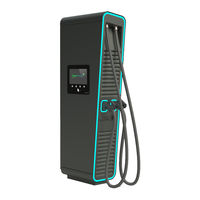Alpitronic Hypercharger HYC 300 Manuals
Manuals and User Guides for Alpitronic Hypercharger HYC 300. We have 3 Alpitronic Hypercharger HYC 300 manuals available for free PDF download: Operation Instructions And Installation Manual, User Manual
Alpitronic Hypercharger HYC 300 Operation Instructions And Installation Manual (105 pages)
ultra-fast charging system for electric vehicles
Brand: Alpitronic
|
Category: Battery Charger
|
Size: 9.35 MB
Table of Contents
Advertisement
Alpitronic Hypercharger HYC 300 Operation Instructions And Installation Manual (64 pages)
Ultra-fast charging system for electric vehicles
Brand: Alpitronic
|
Category: Automobile Accessories
|
Size: 5.78 MB
Table of Contents
Alpitronic Hypercharger HYC 300 User Manual (39 pages)
ultra-fast charging system for electric vehicles
Brand: Alpitronic
|
Category: Battery Charger
|
Size: 4.33 MB
Table of Contents
Advertisement


